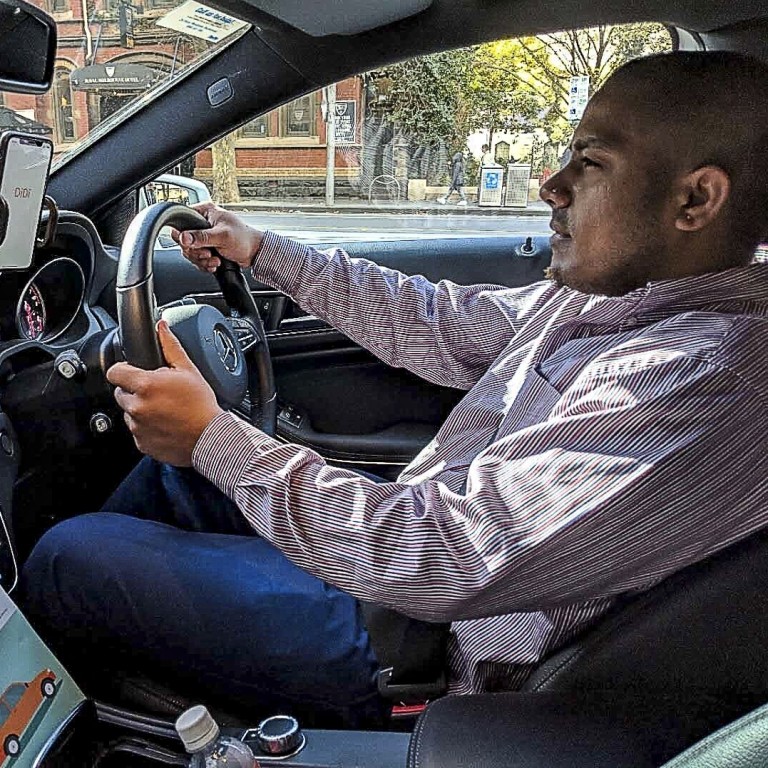
Didi takes its overseas expansion drive to New Zealand but is the ride-hailing market big enough to make a difference?
- Globalisation is a core strategy for Didi after it became the top player in mainland China’s saturated market
- Didi will allow its New Zealand drivers, most of whom already drive for Uber and Ola, to retain up to 95 per cent of fares and offer other incentives
Didi Chuxing is launching new operations in Auckland, New Zealand as China’s largest ride-hailing services provider continues an aggressive overseas push despite pandemic-related headwinds and stiffer competition in its home market.
The Beijing-based company started offering its ride-hailing Didi express service in Auckland, the country’s most-populated city, in early November and plans to expand into food and package delivery services once it builds a solid base of users.
“We see the Australia and New Zealand markets as an outpost for us to grab a bigger share of the global mobility market,” said Lyn Ma, head of Didi’s business development in Australia and New Zealand, in an interview this week.
Didi refused to reveal the total amount of subsidies it has set aside for its push into Auckland, where it will be competing for business in a city of 1.66 million people against long-time rival Uber and other existing players such as Ola and home-grown rideshare company Zoomy.
Globalisation is a core strategy for Didi after it became the top player in mainland China’s saturated market. Since pushing Uber out of China four years ago, Didi has been on a global acquisition spree, investing in Grab and Ola in Asia, Lyft in the US, 99 in Brazil, Taxify in Europe and Careem in Dubai.
This is the worst day to hail a taxi in China, but Didi says it’s ready
“We expect Didi to be quite successful in penetrating the New Zealand market due to its localisation strategies,” said Asad Hussain, a mobility analyst at PitchBook. “Didi will be going up against Uber ... but Didi tends to take a very hands-on, curated approach to developing services for local markets, whereas Uber tends to launch with a singular, cookie-cutter app, an approach that has backfired on the company in the past.”
Didi in August said it planned to expand its operations to smaller cities and towns in regional neighbour Australia, including Canberra and Adelaide. Didi entered Australia in May 2018, and has around 75,000 regular drivers and 1.5 million active passengers across the country, according to company information.
Ma said Didi would allow its New Zealand drivers, most of whom already drive for Uber and Ola, to retain up to 95 per cent of fares and offer incentives to drivers and users to ride with Didi in the initial stages of its expansion. In China, Didi charges drivers up to 25 per cent of fares on each ride.
“In the long run, this [New Zealand rate] is not sustainable,” said Ma, “we plan to bring our financial situation into a very healthy state within a year, which is close to the state of making a profit.”
Ma used to head up driver operations in southern Guangzhou for Uber China before joining Didi in 2014. Jean Liu Qing, president of Didi - whose investors include Alibaba Group Holding, Tencent Holdings as well as private equity firm SoftBank Investment Advisers - said in May that the company’s core ride-hailing business had reached profitability for the first time.
“The push into Australia and New Zealand could be Didi testing the waters for expansion down the line into more developed countries such as Europe and US,” said Feng Liyuan, a senior automotive analyst at investment research firm EqualOcean.
Didi Chuxing expands beyond big cities in Australia as part of global push
One rival did not seem impressed by Didi’s arrival in New Zealand.
“Didi will offer incentives to passengers to build up their market share,” said James Fisk, founder of Zoomy, which operates in Auckland, Wellington and Christchurch. “History has shown that once these discounts ease back, customers revert to the companies that offer the best overall product ... as the only locally-owned rideshare service, we feel very comfortable.”
Ride-hailing consists of hailing a private vehicle or a taxi via a mobile app or platform for a shared or individual ride. The industry began with the launch of Uber in the US in 2010 and has since expanded into a multibillion-dollar global business. Although users have taken to the convenience of ride-hailing, the industry has faced safety concerns and has had to deal with the fallout from Covid-19, such as social distancing and improved in-car hygiene measures.
Ma dismissed concerns that New Zealand is a relatively small market.
“Without accumulating small currents, there is no way to become a river,” he said. “We only had 20,000 to 30,000 rideshare orders per day in Brazil when I first arrived there … [now] it has the potential to develop into one of our most important overseas markets.”
Didi Chuxing valuation could rise amid international expansion, analysts say
Despite being a relatively small ride-hailing market, New Zealand is growing fast. Overall revenue from ride-hailing in the country is estimated to reach US$225 million in 2020, with an annual growth rate of 14.3 per cent from 2020 to 2025 and estimated market volume of US$439 million by 2025, according to data from Statista.com
Ma said there would be business challenges in New Zealand, including well-developed public transport infrastructure, such as buses, trains, trams and ferries. New Zealand also has one of the highest rates of car ownership in the world, with around 3.86 million vehicles registered in 2015 in a country with a total population of 4.794 million, according to mobility research firm Movmi.

